
By Jared Hottenstein
Any teacher will tell you that kids can be noisy. They make all kinds of sounds. Clap their hands. Click their tongues. Snap their fingers. Smack their cheeks. Burp. Fart. Scream. Sing. Most classrooms are a virtual cacophony of noises. And where there is sound, there’s bound to be a whole lot of shaking going on. So why not turn those noises into a teachable moment and explore the science of sound?
What Is Sound?
Sound is the energy that comes from things that move. When something is shaking and moving back and forth very quickly, scientists say it vibrates. That means that when you clap your hands, click your tongue, snap your fingers, scream, sing, or shout, something is moving quickly back and forth.
Sometimes things move so quickly that you can’t even see them moving. Try this: stretch a rubber band and strum it like a guitar string. You should be able to see it moving back and forth very quickly. Congratulations! You just made it vibrate.
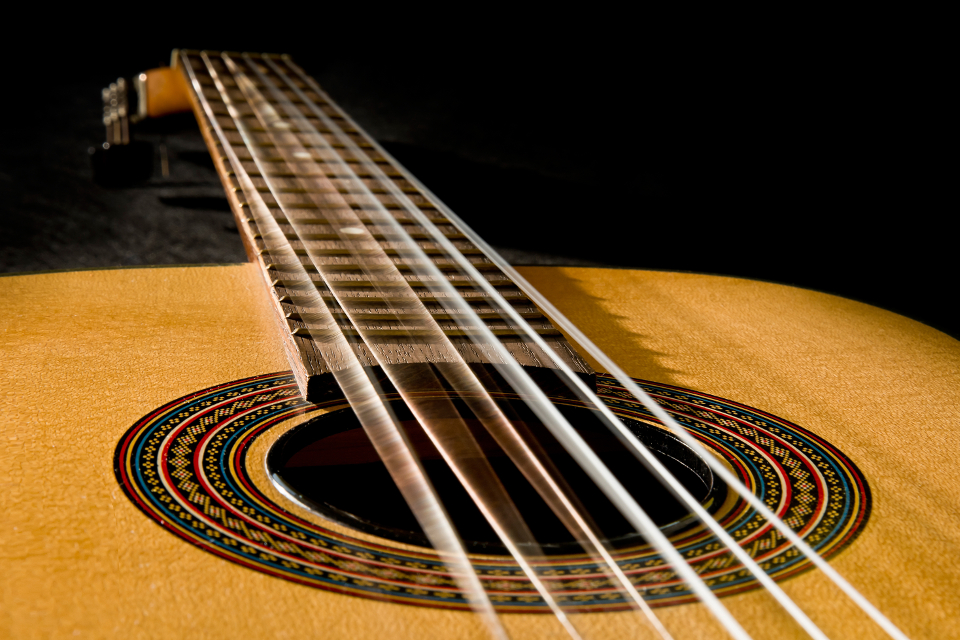
As the rubber band moves back and forth, it causes the air around it to move and vibrate. It even makes the air inside your ear vibrate. When the air inside your ear vibrates, it makes your eardrum move. Your brain turns all those vibrations into sound.
Vibration = Sound
So what, precisely, is vibrating when I talk, scream, or sing? Think back to that rubber band. You have vocal chords in your throat. Vocal chords are bands of muscle. As you push air over the bands, they move back and forth very quickly. They vibrate.
Put your hand on your throat and sing or talk. You should be able to feel something vibrate. As your vocal chords vibrate, the air around them starts moving too.

Sound energy travels through the air into your ears. So when something vibrates, the air around that something starts vibrating. Sound energy moves through the air and makes its way into our ears. Reach up and touch your ears. Your ears help that sound energy get inside your ear. Try cupping your hands behind your ears and listen. Did any sounds you hear get louder? Your cupped hands helped more sound energy get into your ear.
Bringing Sound into the Classroom
We can apply all that great science by having our students create a scientific symphony. Educational Innovations has some great items that showcase sound. For starters, there’s the best-selling Pocket Sound Blaster – there’s a lot of science in that little tube! (In fact, you can read a blog about that here.)
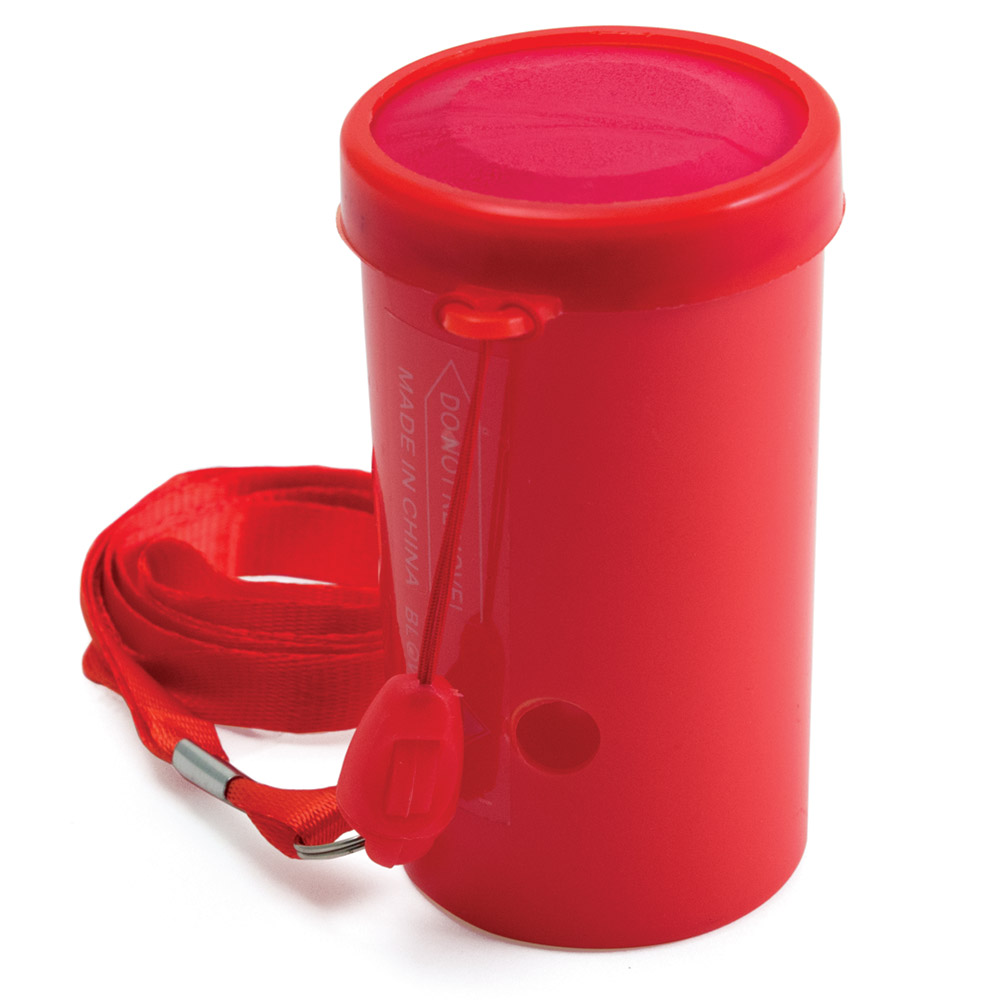
Their Boomwhackers, Singing Pipes, Sound Tubes, Singing Rods, and Thunder Cans are sure to be a hit with your students. Kids love making noise, right? With these gizmos, your students can have a blast banging, shaking, sliding, and listening to all sorts of astonishing sounds.
One of their coolest items is the Chinese Spouting Bowl. It allows students to actually see the vibrations of sound. If you haven’t seen one of these in action, you’ll be amazed! The science behind this astonishing demo is explained in our blog, “Spouting Off in the Classroom.”
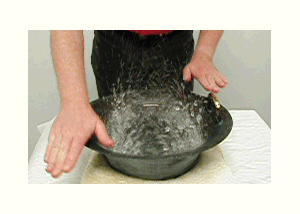
You can also have your students make a few musical instruments that allow them to see something vibrating so they can more easily explore the sounds of science.
Below, I’ll share some of my favorite homemade sound contraptions. Take a look (and a listen) to what these gizmos can do!
The Balloon Bagpipe
It’s not difficult to turn a recycled paper towel tube and a 12-inch balloon into a bagpipe. A bagpipe is basically a bladder of air and pipes. The balloon will function as a bladder of air, and the paper towel tube will be the pipe. A short section of PVC pipe or a plastic vacuum attachment will also work for the pipe.
Start by blowing up a 12-inch balloon. The Dollar Store usually carries those large punch balloons. A punch balloon works even better than a 12-inch balloon. Pinch the neck and stretch it over the end of the tube.
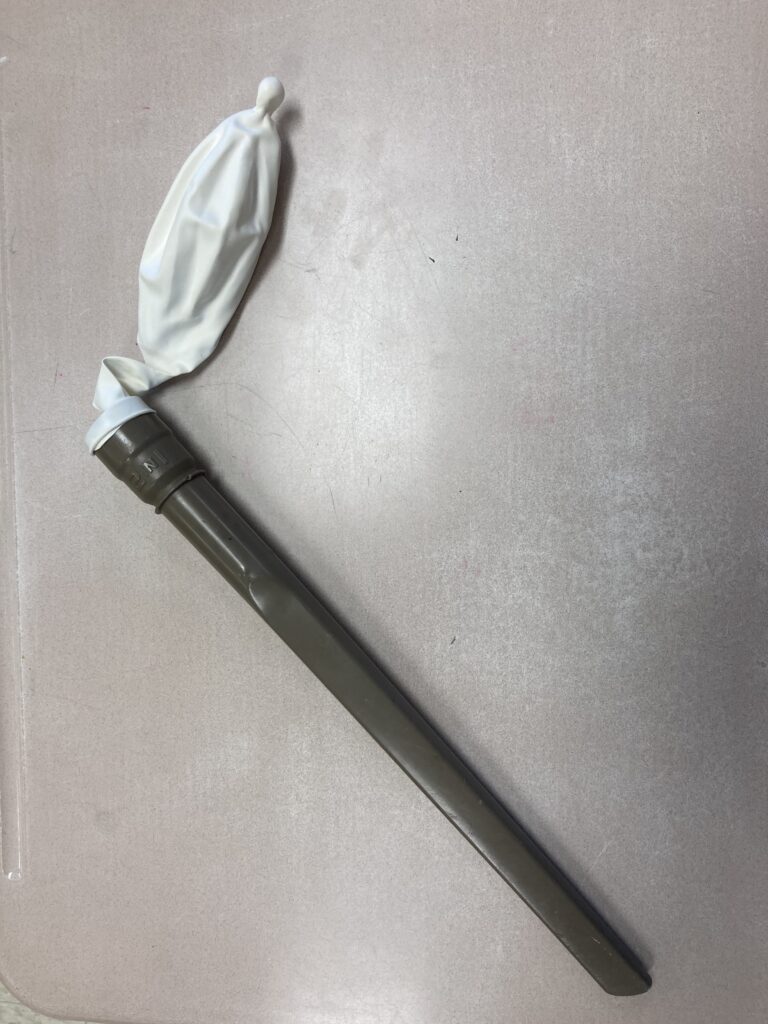
Then tuck the balloon under your arm and make sure the neck of the balloon is stretched across the top of the pipe. Squeeze the balloon and slowly move the neck of the balloon up or down until some air can rush into the pipe and get the neck of the balloon vibrating. This crude bagpipe makes an awesome sound.
Rubber Band Harmonica
You can use two popsicle sticks or two rulers for this harmonica. Start by stretching a rubber band around a ruler. Slip a toothpick under the rubber band near the end of the ruler. Place another ruler on top of the rubber band and hold it in place by securing two binder clips onto each end. Blow through your harmonica and you’ll see the rubber band vibrate.
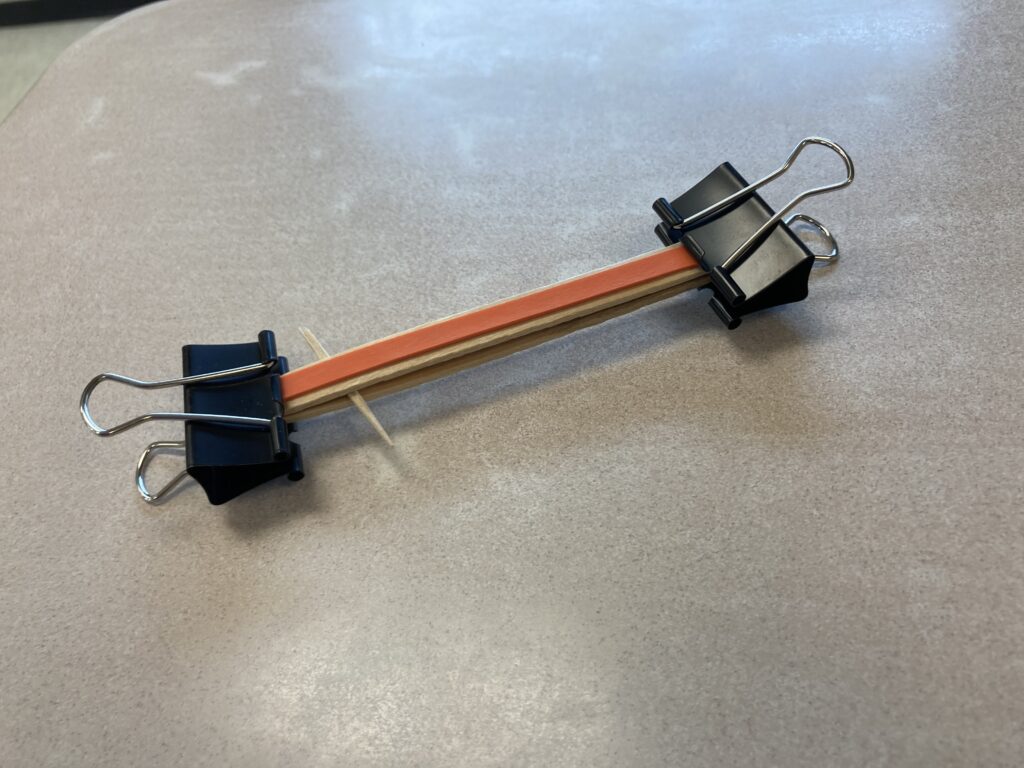
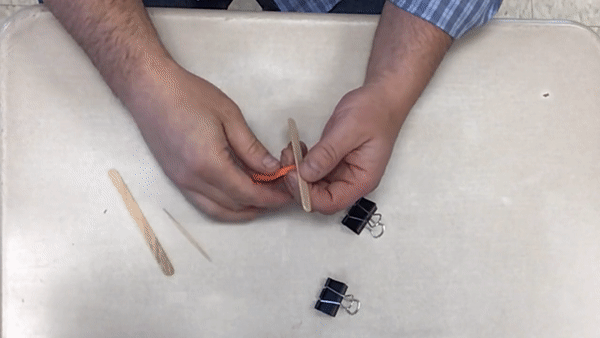
Covid Kazoo
I call this the Covid Kazoo because it’s the only instrument allows students to blow their air down into their clothing instead of out across the classroom. I also call it the Covid Kazoo because it uses a protective latex or vinyl glove.
You’ll also need a water bottle, a straw, and a piece of oaktag (printer paper is too flimsy). Cut the back end off a water bottle. A sturdier bottle works best, but they can be tricky to cut. Stretch a latex glove over the open bottom of the bottle. You can tape the glove over the end of the bottle or use a rubber band to hold it in place.
Next, you’ll need to poke a hole in the side of the bottle with a thumbtack. Use the tapered point of a pencil to make the hole just big enough for a straw. Roll up a piece of oak tag so it can slide into the top of the bottle and be pushed up to touch the glove.
If you blow through the straw, the air will push its way between the roll of oaktag and the glove causing the glove to vibrate. It’s a beautiful sound of science that your students will love and you may not when your entire class is making music! There is something magical about the sounds of science.
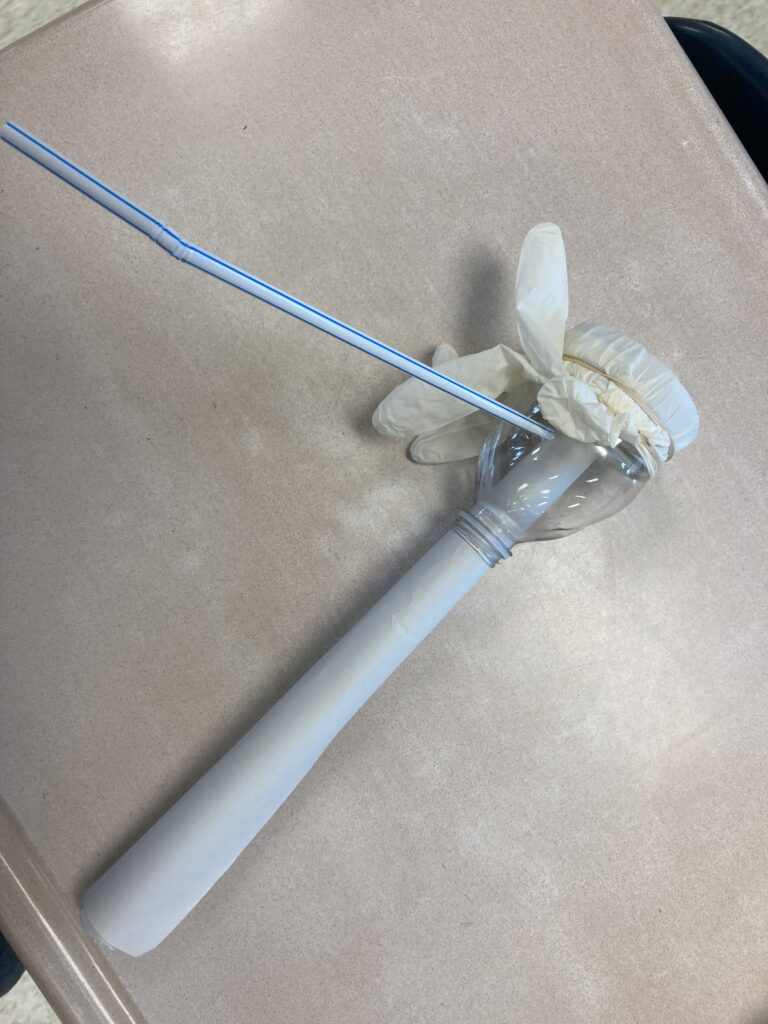
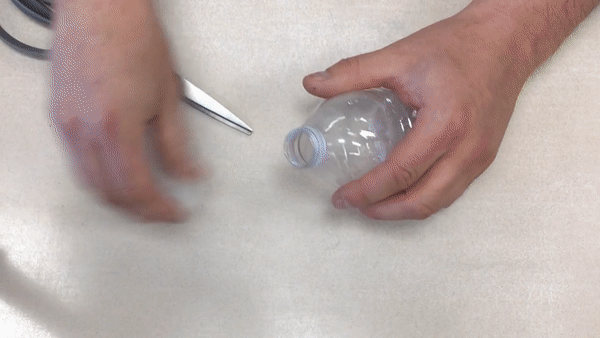
Squealing sneakers, creaking doors,
burps and giggles, shouts and snores.
Farts and thunder, bangs and knocks, drums and whistles, ticks and tocks.
Sounds and noises everywhere.
Sounds are moving through the air.
Every time you hear a sound,
something’s moving all around.
When something wiggles, shivers, shakes. It’s moving fast, yes it vibrates.
When something moves and shakes around, its vibrations make a sound.

